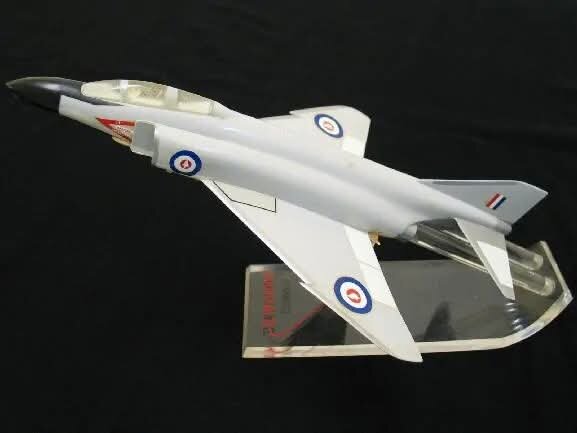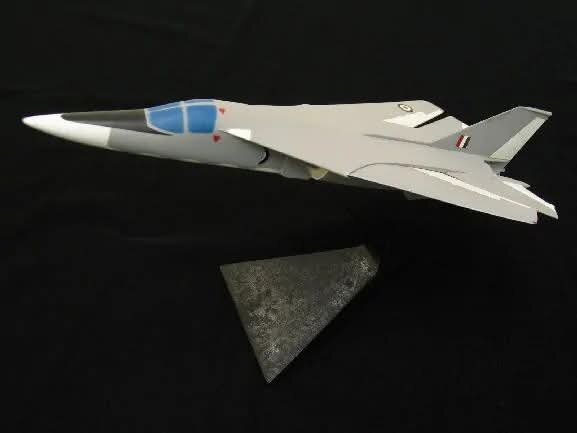NOMISYRRUC
ACCESS: Top Secret
- Joined
- 28 September 2008
- Messages
- 2,327
- Reaction score
- 3,734
Part of Message 118.
However, if it had won, would it have been built in Australia? IOTL all but a handful of the 116 Mirage IIIs were built in Australia. My guess is that all but a handful of the Mirage IVs would have been built in Australia too.
There would be an operating synergy (if that's the right expression) with the RAAF's Mirage IIIs because they had Atar engines too. Therefore, simplified training, maintenance and logistics due to having one engine (the Atar) ITTL instead of two (Atar & TF30) IOTL. Plus said simplified training, maintenance and logistics may have resulted in a reduction in the operating costs of both aircraft compared to the Mirage IIIs and F-111s used IOTL.
There is also the possibly a reduction in the production cost of the engines as Commonwealth made the Atars for most of the 116 Mirage IIIs built for the RAAF. ITTL the firm would have made the Atar engines for most (if not all) of the Mirage IVs too. Say, 36 were initially ordered instead of the 36 Vigilantes recommended by Hancock. Then the number of engines would have been increased from 110 plus spares for the 110 Mirage IIIs originally purchased IOTL to 182 plus spares for the 110 Mirage III and 36 Mirage IV initially purchased ITTL.
IOTL there was a gap of a few years between the completion of the initial run of 110 Mirage IIIs in the late 1960s and the 6 additional Mirage IIIDs that were delivered in the early 1970s. Therefore, it aught to be feasible for more Mirage IVs to be built in Australia in the early 1970s, if (as I expect), the first 36 Mirage IVs were cheaper than the first 24 F-111Cs. IIRC the RAAF acquired a total of 55 Canberras of which 48 were built by Australia's Government Aircraft Factory (GAF). Therefore, say another 18 Mirage IVs were bought, for a total of 54. That would increase the number of engines from 116 plus spares for the 116 Mirage IIIs eventually built for the RAAF IOTL to 224 plus spares for the 116 Mirage III and 54 Mirage IV eventually built ITTL.
IOTL GAF built the 48 out of 55 Canberras, Commonwealth built the 112 Sabres, Commonwealth built the Avon engines for both, Commonwealth built all but a few of the 116 Mirage IIIs and it also built all but a handful of the Atars for the 116 Mirage IIIs.
Therefore, ITTL, maybe Commonwealth still builds the Mirage IIIs and GAF builds the Mirage IVs, with Commonwealth building the Atar engines for both.
OTOH the if they were built by Dassault, that would have increased the number built by that firm from 66 (including prototypes) IOTL to 102 or 120 ITTL depending upon whether the RAAF bought 36 or 54. The effect on the economics of Mirage IV production by Dassault would be more than the effects of adding 36 or 54 aircraft to the 158 Vigilantes that (IIRC) were built by North American IOTL or adding 24 F-111Cs to the 550-odd F-111s & FB-111s that were built by General Dynamics for the US Forces IOTL.
My conclusion from reading the above is that Mirage IV came fifth out of five.The Hancock mission evaluated 5 aircraft against 2 in-service dates; F4C, Mirage IV and RA5C for a 1966 date and TSR2 and TFX for a 1969 date. While Hacncok recommended the RA5C for the 1966 date the Government decided 1969 was OK and went with the F111. If however their recommendation was accepted I think that it's quite likely that the RAAF A5C version would be delivered within the timeframe as it wasn't a development project.
However, if it had won, would it have been built in Australia? IOTL all but a handful of the 116 Mirage IIIs were built in Australia. My guess is that all but a handful of the Mirage IVs would have been built in Australia too.
There would be an operating synergy (if that's the right expression) with the RAAF's Mirage IIIs because they had Atar engines too. Therefore, simplified training, maintenance and logistics due to having one engine (the Atar) ITTL instead of two (Atar & TF30) IOTL. Plus said simplified training, maintenance and logistics may have resulted in a reduction in the operating costs of both aircraft compared to the Mirage IIIs and F-111s used IOTL.
There is also the possibly a reduction in the production cost of the engines as Commonwealth made the Atars for most of the 116 Mirage IIIs built for the RAAF. ITTL the firm would have made the Atar engines for most (if not all) of the Mirage IVs too. Say, 36 were initially ordered instead of the 36 Vigilantes recommended by Hancock. Then the number of engines would have been increased from 110 plus spares for the 110 Mirage IIIs originally purchased IOTL to 182 plus spares for the 110 Mirage III and 36 Mirage IV initially purchased ITTL.
IOTL there was a gap of a few years between the completion of the initial run of 110 Mirage IIIs in the late 1960s and the 6 additional Mirage IIIDs that were delivered in the early 1970s. Therefore, it aught to be feasible for more Mirage IVs to be built in Australia in the early 1970s, if (as I expect), the first 36 Mirage IVs were cheaper than the first 24 F-111Cs. IIRC the RAAF acquired a total of 55 Canberras of which 48 were built by Australia's Government Aircraft Factory (GAF). Therefore, say another 18 Mirage IVs were bought, for a total of 54. That would increase the number of engines from 116 plus spares for the 116 Mirage IIIs eventually built for the RAAF IOTL to 224 plus spares for the 116 Mirage III and 54 Mirage IV eventually built ITTL.
IOTL GAF built the 48 out of 55 Canberras, Commonwealth built the 112 Sabres, Commonwealth built the Avon engines for both, Commonwealth built all but a few of the 116 Mirage IIIs and it also built all but a handful of the Atars for the 116 Mirage IIIs.
Therefore, ITTL, maybe Commonwealth still builds the Mirage IIIs and GAF builds the Mirage IVs, with Commonwealth building the Atar engines for both.
OTOH the if they were built by Dassault, that would have increased the number built by that firm from 66 (including prototypes) IOTL to 102 or 120 ITTL depending upon whether the RAAF bought 36 or 54. The effect on the economics of Mirage IV production by Dassault would be more than the effects of adding 36 or 54 aircraft to the 158 Vigilantes that (IIRC) were built by North American IOTL or adding 24 F-111Cs to the 550-odd F-111s & FB-111s that were built by General Dynamics for the US Forces IOTL.







